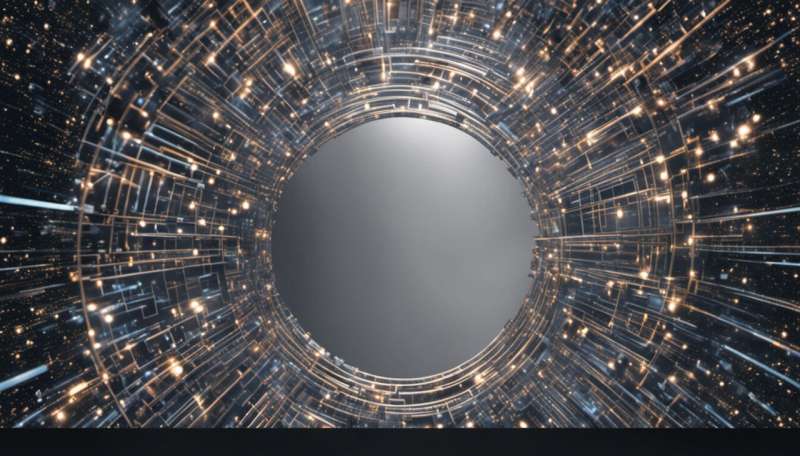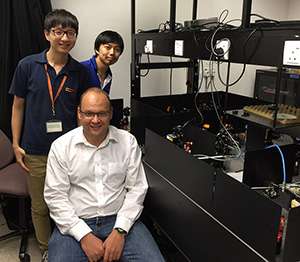Experiments show that the careful choice of witnesses makes it easier to detect entangled quantum states

Accurately probing the delicate relationship between linked, or 'entangled', photons—irrespective of the distance between them—is an important element of quantum cryptography, and perhaps even teleportation. Now, A*STAR researchers have demonstrated an optimized way to detect entangled photons that involves using a 'witness family.'
The concept of entanglement—where two photons are linked so that no matter how far apart they are, acting on one will invariably affect the other—is a critical aspect of quantum cryptography. To definitively determine whether something is entangled in quantum mechanics requires a witness, which in this context is anything that can determine a particle's state by measuring it.
Entanglement can be estimated by calculating the 'expectation value' of a witness. If this value is negative, then the quantum bits, or 'qubits', are entangled. In contrast, if it is zero or positive, the states could be either entangled or separable; in this case, the witness is not reliable and another one needs to be sought. Calculating the expectation values of non-linked witnesses one by one is unlikely to produce a concrete answer. But if the witnesses are linked, then entanglement can be determined both definitively and efficiently.
Leonid Krivitsky and his colleagues at the A*STAR Data Storage Institute and the Centre for Quantum Technologies at the National University of Singapore explored, both computationally and experimentally, the idea of using a witness family.
"A witness family is a set of witnesses—with each witness specified by another value of a certain parameter—that can be measured using a single experimental set-up," explains Krivitsky.

The team focused on a two-qubit system and considered just the polarization state. In this scenario, witness families are measured using an interferometer consisting of beam splitters, wave plates and detectors—each setting measures a specific witness family.
"We measure whole families in one go, which is in marked contrast to all previous experiments that invariably measured witnesses one by one," notes Krivitsky.
The team considered random and adaptive measurement strategies using both physical measurements and Monte Carlo simulations. They found that the adaptive measurement schemes, which used information from previous measurements to choose the next family to be measured, significantly reduced the number of witnesses needed to verify entanglement.
These findings could improve the reliability of quantum-state tomography measurements. "We also hope that our work will renew interest in experimental witnesses and trigger further developments that exploit the concept of witness families in other physical contexts," comments Krivitsky.
More information: "Experimental detection of entanglement with optimal-witness families." Physical Review Letters 113, 170402 (2014). dx.doi.org/10.1103/PhysRevLett.113.170402
Journal information: Physical Review Letters




















